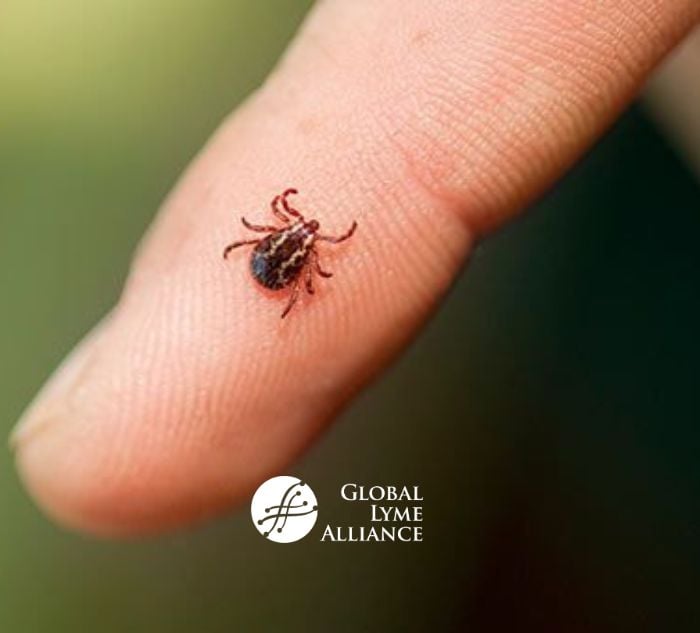
Learn about rickettsiosis, a potentially fatal tick-borne disease, and how to prevent it. Discover the symptoms, treatment, and co-infections associated with this deadly illness. Stay informed and protect yourself.
While Lyme is the most common tick-borne disease, it is not the only one to be concerned about. There are several different types of ticks that carry many different diseases (co-infections), some of which require different treatment than Lyme and can be very serious. While awareness of babesiosis and Powassan virus, both of which can be fatal, is growing due to increased cases, another deadly tick-borne illness to watch for is rickettsiosis. Tragically, rickettsiosis recently claimed the life of a two-year-old girl in Torreón, Mexico who was bitten by ticks that were on her family’s dog. Rickettsiosis can be treated with antibiotics if it’s caught and diagnosed early, but many people don’t know about this tick-borne illness. Let’s walk through what rickettsiosis is, where it’s found, and how to prevent it.
What is Rickettsiosis?
Rickettsiosis is a bacterial infection caused by different types of Rickettsia pathogens. Rickettsia parkeri causes Rickettsia parkeri rickettsiosis, sometimes called “American tick bite fever” or “American boutonneuse fever”, while Rickettsia rickettsii causes Rocky Mountain Spotted Fever (RMSF). Rickettsia parkeri is spread by the Gulf Coast tick, whereas Rickettsia rickettsii is carried by the American dog tick, brown dog tick, and the Rocky Mountain wood tick.
Where is Rickettsiosis Found?
Gulf coast ticks are mostly found in the Southeastern U.S., though they are also in areas in the Northeast, Midwest, and Southwest. The American dog tick is in the Eastern, Central, and Western United States. The brown dog tick is mostly in the Southwestern U.S. along the U.S.-Mexico border but is also found throughout the U.S. The Rocky Mountain wood tick is in the Rocky Mountain states, and has become more common in Arizona.
It's important to remember that even if you don’t live in one of these areas, you can get a tick bite while traveling.
What are the Symptoms of Rickettsiosis?
Rickettsia parkeri and Rocky Mountain Spotted Fever can be hard to tell apart because they have some overlapping symptoms. A distinguishing sign of Rickettsia parkeri is an inoculation eschar (dry, dead tissue within a wound) at the site of the tick bite. Rickettsia parkeri is generally more mild than Rocky Mountain Spotted Fever. In addition to the eschar, within 2-10 days Rickettsia parkeri usually causes:
- Fever
- Headache
- Rash (spots on the chest or extremities)
- Muscle aches
Rocky Mountain Spotted Fever is the more serious rickettsiosis, which can be fatal if not treated. Like Lyme disease, RMSF sometimes, but not always, causes a rash. The RMSF rash is pink spots, similar to measles, that appear first on the forearms, wrists, and ankles, and then spread to the chest and sometimes palms and soles. After day six, spots can be red or purple.
In addition to or instead of a rash, RMSF can cause the following symptoms within the first four days of a tick bite:
- High fever
- Severe headache
- Malaise
- Muscle aches and pains
- Swelling around the eyes and on the back of hands
- Nausea, vomiting, anorexia
After five days, RMSF infection is considered late or severe. In addition to the darker spotted rash, symptoms can include:
- Altered mental status, brain swelling, or coma
- Respiratory distress
- Necrosis
- Multiorgan system damage or failure
How is Rickettsiosis Diagnosed?
Rickettsiosis can be diagnosed by a blood test but can also be diagnosed clinically based on symptoms and tick exposure. As with Lyme disease, rickettsiosis tests usually come back negative during the beginning of infection because the body has not yet had time to build up enough antibodies to show up on a test. If your doctor suspects you have rickettsiosis, they should start you on treatment immediately.
How is Rickettsiosis Treated?
Rickettsiosis is treated with the antibiotic doxycycline. It is very important to start treatment early for rickettsiosis. Untreated Rocky Mountain Spotted Fever can be fatal.
What are Co-infections of Rickettsiosis?
The American dog tick and the Rocky Mountain wood tick can also carry tularemia.
Preventing Tick Bites
The best way to avoid rickettsiosis and other tick-borne diseases is to be Be Tick AWARE:
- AVOID areas where ticks live.
- WEAR light-colored clothing to spot ticks more easily, such as long-sleeved shirt tucked in at the waist, long pants tucked into high socks, closed-toe shoes, and a hat with your hair tucked in. Do not walk in the grass barefoot or in open sandals, even if it’s a shortcut.
- APPLY EPA-approved tick repellent (such as DEET or picaridin) to skin and insecticide (such as permethrin) to clothing and shoes as directed.
- REMOVE clothing upon entering the home and toss into the dryer at high temperature for 10-15 minutes to kill live ticks (putting them in the washer won’t work).
- EXAMINE yourself and your pets for ticks daily. Feel for bumps paying close attention the back of knees, groin, armpits, in and behind the ears, belly button, and scalp.
***








-2.jpg)